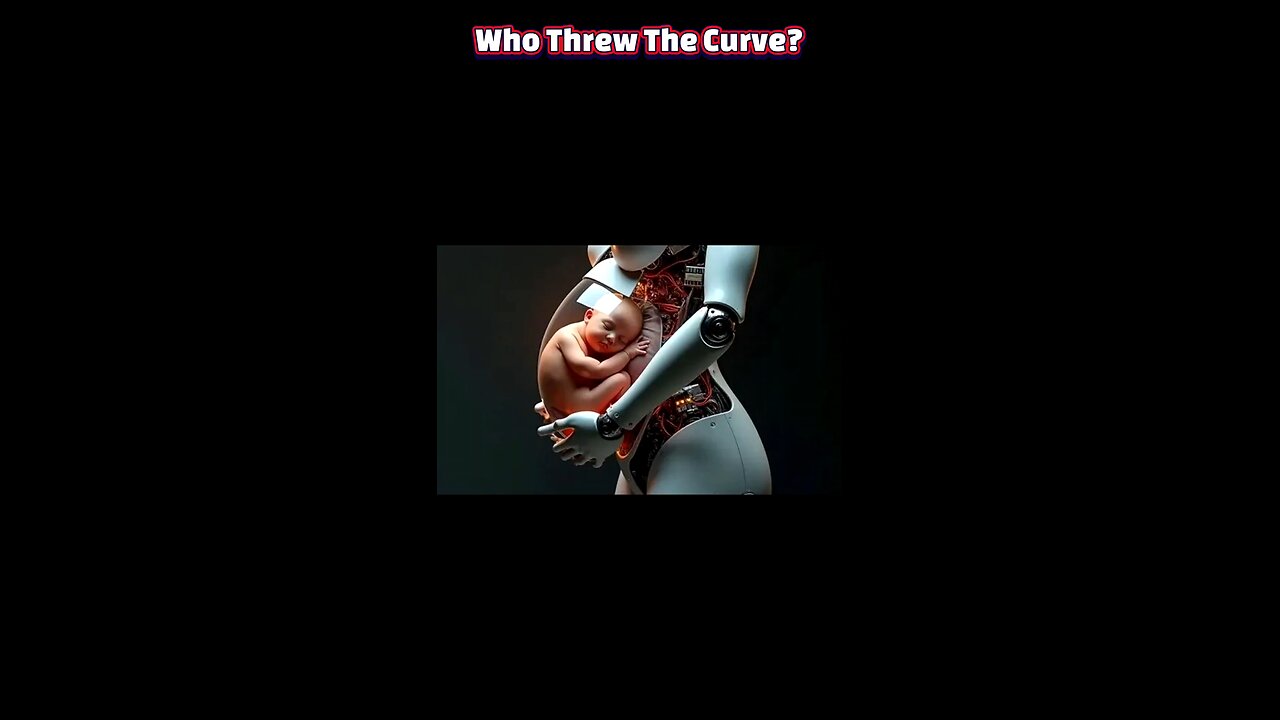Premium Only Content

China Unveils Pregnancy Robot with Artificial Womb — The Future of Birth?
In a move that has sparked both fascination and controversy, Guangzhou-based Kaiwa Technology has announced plans to develop what could be the world’s first pregnancy-capable humanoid robot. The innovation centers on integrating an artificial womb into a life-sized humanoid form, enabling it to carry a fetus through the full ten months of gestation and deliver a baby. Slated for debut by 2026 and priced under 100,000 yuan (about US $13,900), the so-called “gestation robot” is being positioned as a groundbreaking alternative for individuals who wish to avoid the physical demands of human pregnancy. The announcement, made at the 2025 World Robot Conference in Beijing, has already ignited intense debate over its scientific feasibility, ethical implications, and potential societal impact.
At the heart of this concept lies artificial womb technology, a field that has been steadily advancing in laboratory settings. The system uses artificial amniotic fluid to replicate the natural environment of the uterus, while nutrients are delivered to the fetus via a hose connected to the umbilical cord. This mimics the biological processes of gestation, from implantation to delivery. While artificial wombs have previously been used to support premature animals—most famously a lamb in a “biobag” in 2017—Kaiwa’s vision pushes the technology into uncharted territory: sustaining life from conception to birth entirely outside the human body. Founder Zhang Qifeng emphasizes that the robot is not merely an incubator, but a fully interactive humanoid designed to simulate the experience of pregnancy in a visible, tangible form.
The potential applications of such a device are vast and controversial. On one hand, it could offer new hope to individuals and couples facing infertility, medical complications, or other barriers to traditional pregnancy. It might also reduce health risks associated with childbirth, particularly in high-risk pregnancies. On the other hand, critics warn of profound ethical dilemmas: questions about the commodification of human life, the psychological implications for parents and children, and the societal consequences of decoupling reproduction from the human body. Legal frameworks for such technology are virtually nonexistent, and Kaiwa has reportedly begun discussions with authorities in Guangdong Province to address regulatory and moral concerns.
From a technological standpoint, the leap from partial gestation support to full-term artificial pregnancy is enormous. Current artificial womb systems function more like advanced neonatal incubators, sustaining life only after a significant portion of gestation has occurred. For Kaiwa’s humanoid to succeed, breakthroughs will be required in fertilization, implantation, and long-term fetal development outside the human body. The company has not disclosed detailed scientific data, leaving many experts skeptical about whether the technology can be safely scaled for human use in the near future. Nevertheless, the announcement reflects a broader trend in robotics and biotechnology—where boundaries between biology and engineering are increasingly blurred.
Ultimately, Kaiwa Technology’s pregnancy humanoid robot represents both a technological marvel and a societal challenge. If successful, it could redefine the meaning of parenthood, reproduction, and even the human life cycle. Yet its path forward will be shaped as much by ethical debate and public perception as by engineering milestones. Whether hailed as a triumph of human ingenuity or criticized as a step too far, the project forces us to confront a fundamental question: in the age of artificial life creation, how far are we willing to let machines take on the most intimate roles of humanity?
-
 8:33
8:33
Damon Imani
16 hours agoDamon OBLITERATES Everyone On The View For 8 Minutes Straight! | Compilation Vol.16
2792 -
 18:08
18:08
Actual Justice Warrior
20 hours agoMamdani CRIES Victim After Eric Adams Drops Out
2.43K15 -
 23:08
23:08
DeVory Darkins
1 day ago $10.62 earnedDemocrats STUNNED by Trump meeting as Omar EMBARRASSES after shocking statement
15.6K87 -
 2:17:10
2:17:10
qixso
14 hours ago $1.94 earnedBO7 ON THE WAY !
22.5K3 -
 2:07:47
2:07:47
Side Scrollers Podcast
19 hours agoHasan SCARED To Attend Twitch Con + EA Devs CRASH OUT Over Saudi Sale + More | Side Scrollers
27.6K4 -
 15:10
15:10
GritsGG
15 hours agoInsane Regain Dubular on Warzone Duos w/ Bobby Poff!
9.05K -
 2:48:00
2:48:00
BlabberingCollector
1 day agoReacting To Emma Watson / Jay Shetty Interview, Reading JKR Tweets!
10.1K5 -
 17:52
17:52
The Pascal Show
1 day ago $5.03 earned'PARENTS DON'T BELIEVE HE DID IT!' Candace Owens Says Tyler Robinson's Parents Don't Think He Did It
25.3K28 -
 1:46:23
1:46:23
The HotSeat
15 hours agoCommander In Chief and SECWAR Address The Troops, and I AM HERE FOR IT!
43.7K19 -
 2:07:00
2:07:00
The Michelle Moore Show
2 days ago'President Trump on Radicals, Susie Wiles In Question Again, Erika Kirk Evokes More Questions, Spiritual Calamity Coming For The President?' Guest, Mark Taylor: The Michelle Moore Show (Sept 29, 2025)
49.6K112